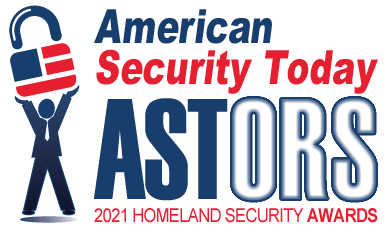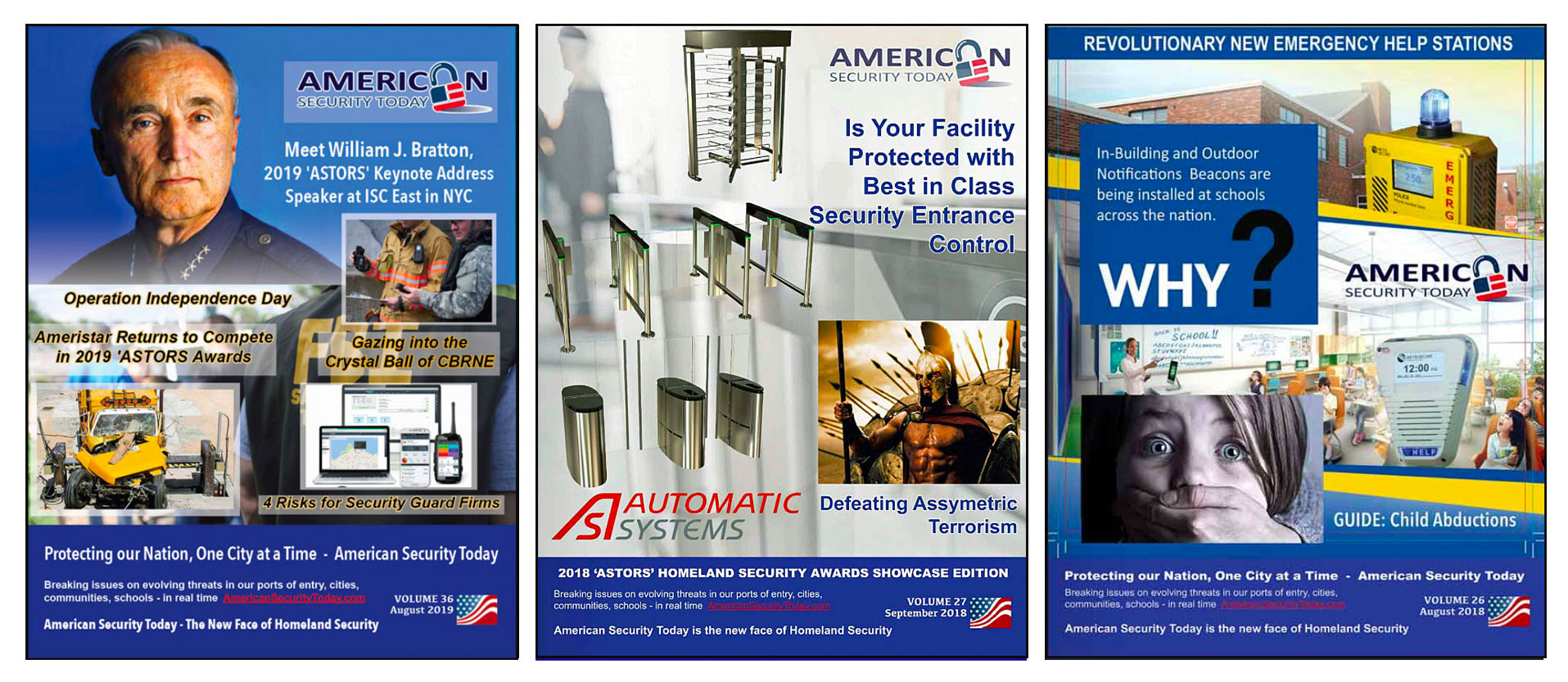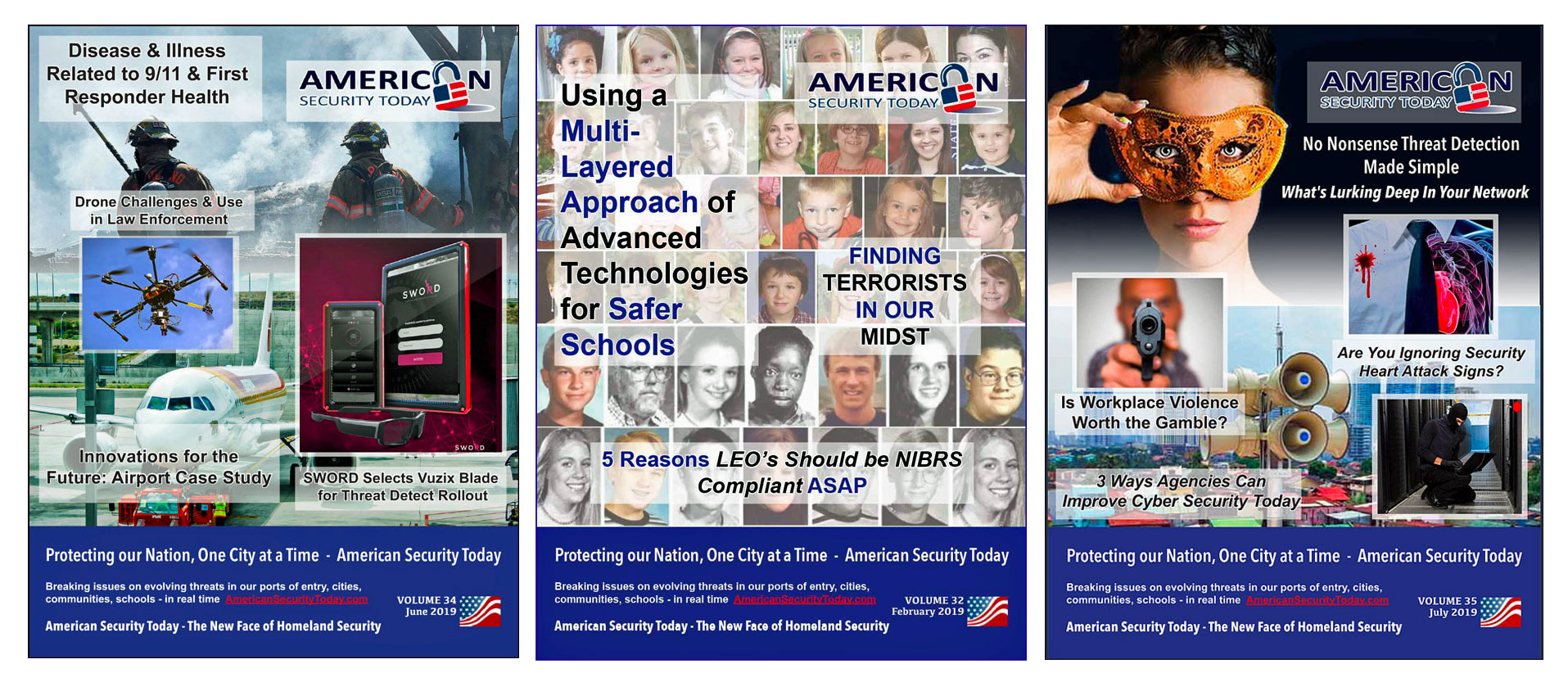
Managing conflicts is an integral aspect of law enforcement, but the many nuances of personal interactions can make it challenging and situations can quickly escalate to dangerous levels.
The Department of Homeland Security (DHS) Science and Technology Directorate (S&T), which was Recognized with Three Platinum ‘Excellence in Homeland Security’ and One ‘Excellence in Public Safety’ Awards in the 2020 ‘ASTORS’ Awards Program, is conducting research to learn more about these interactions, with a focus on de-escalation methods.
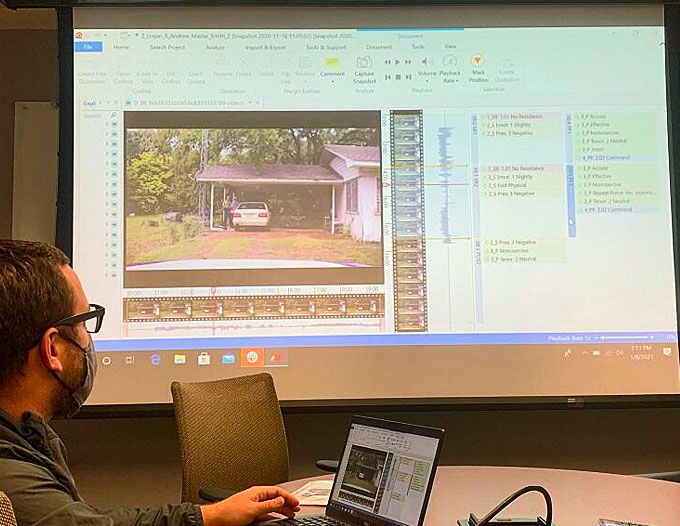
The aim of this effort is to identify effective conflict resolution strategies by reviewing video footage of police encounters, coding them to classify behaviors and outcomes, and detecting patterns that can inform future training.
To assist with this study, S&T’s partners at the Federal Law Enforcement Training Centers (FLETC) asked the Dallas Police Department and the Smith County Sheriff’s Office in Texas, to provide video footage of recent police encounters.
“The footage they gave us included traffic stops, encounters with individuals in distress, suspicious person calls, encounters with homeless individuals, and more,” explains Dr. Laura Zimmerman, FLETC Senior Researcher.
“The goal is to gather information from the footage about current practices used in the field.”

“We want to learn what helps to keep a situation from escalating or what helps to de-escalate a situation.”
“We’re hoping to find behavioral consistencies across the video footage.”
FLETC is collaborating with the DHS Center of Excellence at Arizona State University’s (ASU) Center for Accelerating Operational Efficiency to identify the verbal and physical behaviors police use to manage conflict and to potentially develop models that indicate patterns of response.
Since the project kicked-off in May 2020, FLETC and researchers from ASU’s School of Criminology and Criminal Justice have been completing the video coding and analysis process.
When finished, they will identify training content based on the data, and expect to publish results for law enforcement and academic communities by mid-summer.
“We use a software program that allows us to mark segments in each video and code officer and community member behaviors as they interact.”
“Once the coding is done, the codes are entered into an Excel sheet and transferred into a statistical software program where the analysis is done,” said Dr. Zimmerman.
“The coding process is quite extensive and challenging. We want to make sure to capture all the behaviors that may influence the interactions.”

Enforcement Training Centers in Glynco, GA.
“We use the coding scheme to study and document the interaction captured on video between officers and civilians in different response settings,” added Jim Grove, S&T’s FLETC Portfolio Manager.
“We hope to discover things that are unique, that work, that don’t work, what results in escalation versus de-escalation.”
DHS efforts to assess and incorporate more effective de-escalation strategies date back to April 2017, when FLETC’s Behavioral Science Division (BSD) reviewed its Conflict Management training course and began looking into communication strategies associated with the concept of de-escalation.
BSD met with researchers from FLETC’s Training and Innovation Operations Branch (TIOB) to explore the possibility of conducting research that would identify the tactics used by police officers to manage conflicts and de-escalate situations in real-world settings.
Together, BSD and TIOB developed a plan that leveraged research literature incorporating suspect resistance and use-of-force models, enabling researchers to examine the social interactions that occur in patrol situations.
The goal is to identify any pattern of behavior that consistently produces positive outcomes, such as lower levels of officer force, reduced citizen resistance levels, and increased citizen compliance and cooperation.
The ultimate objective is to produce findings that guide training for federal, state and local law enforcement.
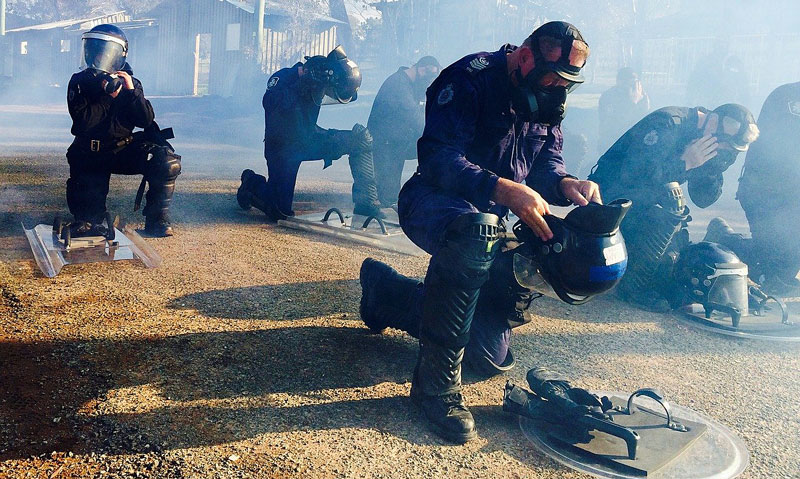
“We want to identify any patterns of behavior that tend to work in real world environments and use this knowledge to inform training.”
“And if we see behaviors that don’t seem to work, we can recommend toning those down in practice,” said Dr. Zimmerman.
Following this initial project, DHS S&T and FLETC will explore the possibility of developing an intelligent automated coding system that both researchers and law enforcement agencies can use to further answer questions about the complex social interactions that occur between officers and citizens.
“We hope this manual coding can be converted to an algorithm,” said Grove.
“If this can be automated, it could be a tool that is applied throughout law enforcement at the local level to help improve training, community relations, personally improve officer skills, show trends that work and don’t work, and maybe even identify where new training delivered is or isn’t having an impact.”
An algorithm relating the interactions of law enforcement and civilians could be used by law enforcement agencies to assess body worn and other videos.
Ultimately, all this information could be used to improve individual and departmental training on how to manage conflicts with civilians.
(Learn More – go inside the Baltimore City Police Department to see how de-escalation training works. The training was implemented after the death of Freddie Gray, a young black man who died after officers from this department took him into custody. Courtesy of Insider News and YouTube. Posted on Dec 13, 2020.)
For more information about S&T and FLETC’s work with law enforcement and research efforts on de-escalation methods, contact STMedia@hq.dhs.gov.
DHS S&T Directorate Recognized for Excellence in the 2020 ‘ASTORS’ Awards
American Security Today’s ‘ASTORS’ Homeland Security Awards program is entering its Sixth Year and continues to recognize the Outstanding Innovations of top firms and agencies in the Homeland Security and Public Safety fields.
The Annual ‘ASTORS’ Awards is the preeminent U.S. Homeland Security Awards Program highlighting the most cutting-edge and forward-thinking security solutions coming onto the market today, to ensure our readers have the information they need to stay ahead of the competition, and keep our Nation safe – one facility, street, and city at a time.
90% of ‘ASTORS’ Award Winners return to compete in the Annual ‘ASTORS‘ Homeland Security Awards Program, and 100% of ‘ASTORS’ Sponsors have returned year to year to reap the benefits of their participation in the industry’s largest and most comprehensive Annual Awards Program.
2020 was a very challenging year for everyone due to the COVID-19 pandemic and the much heralded AST ‘ASTORS’ Awards Winners Presentations and exclusive Luncheon at the Jacob Javits Center in NYC was canceled and rescheduled for 2021 due to the virus.

However, the 2020 ‘ASTORS’ Homeland Security Awards Program was again a huge success and many new categories were added including a section for COVID-19 Detection and Innovation.
Department of Homeland Security (DHS) Science and Technology (S&T) Directorate

Excellence in Homeland Security
-
The COVID-19 pandemic is a global threat with life and death consequences, the enormity of which many of us have never seen before.
-
It is also a scientific challenge in need of innovative solutions and S&T is using every tool at its disposal to join the fight; including harnessing the knowledge of it’s experts on technology deployments, international collaboration, scientific breakthroughs, and support for America’s frontline workers.
-
S&T has focused its efforts on laboratory research and providing valuable resources to inform the broader response community and help keep front line responders safe.
-
Highlights of S&T’s response efforts can be found in our Battling the Invisible Enemy report.
DHS S&T Chemical Security Analysis Center (CSAC)

Excellence in Homeland Security
-
CARD, a chemical synthesis and chemical informatics centric data system (e.g. boiling point, melting point, toxicity, or spectroscopic information) containing both unclassified and classified data, is accessible from a classified website maintained on a server hosted by the Department of Defense.
-
The website is available to appropriately cleared personnel from DHS, Department of Justice (e.g. FBI), other United States Government interagency offices, and state and local agencies, and provides information on how chemicals of interest could be produced.

-
There is a detailed description of how each chemical is prepared to include information relevant to each step, the reagents and reactants that are needed and the conditions necessary for the reactions to take place, such as time, temperature, mixing—like a recipe.
-
If law enforcement were to discover a table full of labeled chemicals in a clandestine laboratory, they would put these names as a list in CARD to find out what the suspects are making – illicit drugs, poisons, or warfare agents.
-
CARD can be used the other way around. If police find an illicit drug or a warfare agent, they can search in the website to see what chemicals can be used to make it.
-
For example, if police capture a suspect with a vial of sarin gas (a nerve agent that can kill in minutes after inhalation), they can use CARD to determine which chemicals are used to make it. Police can then search the suspect’s illicit lab for those chemicals and obtain further evidence of wrongdoing.
DHS S&T National Urban Security Technology Laboratory (NUSTL)

Excellence in Public Safety
-
-
Hoist Rescue Gloves for Aerial Rescue
-
-
Rescue helicopter hoist operators need gloves to protect the hand that guides the hoist cable during rescue descents and ascents, using a significant amount of force to mitigate the cable swinging for situations from hurricane evacuations and dive rescues to rescuing stranded hikers on a mountain side, missions vary and no two are ever alike.
-
A partnership between S&T and Higher Dimension Materials, Inc. (HDM) resulted in an enhanced rescue hoist glove with increased flexibility, durability, and dexterity.
-
The glove design uses cushioning materials offering protection to the thumb crotch (purlicue) area, the index and little finger, and a leather guard to alleviate inconsistent glove performance when wet,” said Jones-Holt.
(See the enhanced Hoist Rescue Glove in action. Courtesy of DHS Science and Technology Directorate and YouTube.)
Department of Homeland Security (DHS) Science and Technology (S&T) Directorate

Excellence in Homeland Security
-
The Slash CameraPole is a self-triggering platform with wireless data retrieval to detect and give warning of suspicious activities at the U.S.-Canada border, specifically a cleared stretch of land at the border that is approximately 20-feet wide, 1,349 miles long, and is referred to as the “Slash.”

-
This man-made, treeless zone is mandated by the International Boundary Commission and presents a formidable surveillance challenge, against such threats as illegal crossings, drug and illegal contraband smuggling and human trafficking.
-
Using the Slash CameraPole system, Border Patrol has been able to establish an advanced border surveillance capability where none existed before.
-
Partnering with MIT Lincoln Laboratory and several private companies to create the Slash CameraPole with numerous ingenious features, such as solar panels and a back-up fuel cell system make it independent of the power grid, multiple infrared cameras (two long-range, one foreground, and one base imager with a fisheye lens) mean it doesn’t miss a thing.
-
An in-ground cement foundation and electrical enclosure ensures it can withstand brutal winter conditions. Should its unobtrusive appearance manage to draw the attention of would-be vandals, the Slash CameraPole is resistant to small arms fire and other tampering.
-
The Slash CameraPole also employs advanced motion detection algorithms and automated alerts designed to improve classification of targets and lower the chance of false alarms from factors such as wild animals or vegetation moving in the wind.
-
*DHS S&T Programs have now been recognized in their Fifth Annual ‘ASTORS’ Awards Program.
The 2020 ‘ASTORS’ Awards Program was sponsored by ATI Systems, Attivo Networks, Automatic Systems, Desktop Alert, X.Labs and Reed Exhibitions, every one a returning Sponsor from 2020, 2019 and More.
Nominations are now being accepted for the 2021 ‘ASTORS’ Homeland Security Awards at https://americansecuritytoday.com/ast-awards/.
Comprehensive List of Categories Include:
| Access Control/ Identification | Personal/Protective Equipment | Law Enforcement Counter Terrorism |
| Perimeter Barrier/ Deterrent System | Interagency Interdiction Operation | Cloud Computing/Storage Solution |
| Facial/IRIS Recognition | Body Worn Video Product | Cyber Security |
| Video Surveillance/VMS | Mobile Technology | Anti-Malware |
| Audio Analytics | Disaster Preparedness | ID Management |
| Thermal/Infrared Camera | Mass Notification System | Fire & Safety |
| Metal/Weapon Detection | Rescue Operations | Critical Infrastructure |
| License Plate Recognition | Detection Products | And Many Others! |
| COVID Innovations | And Many Others! |
Don’t see a Direct Hit for your Product, Agency or Organization?

With the unprecedented occurrence of the COVID-19 pandemic, the focus of the safety and security industries has realized the need to increase innovations to address the daily growing challenges.
As such AST aims to make sure these firms and professionals are reflected in the 2021 ‘ASTORS’ Awards Program, so we’d like to encourage you to submit appropriate categories recommendations and include COVID-19 Frontline Professionals in your Nominations to see that these Professionals, Facilities, and Vendors receive the Recognition they Deserve!
Submit your category recommendation for consideration to Michael Madsen, AST Publisher at: mmadsen@americansecuritytoday.com.
Why American Security Today?
The traditional security marketplace has long been covered by a host of publications putting forward the old school basics to what is Today – a fast changing security landscape.
The traditional security marketplace has long been covered by a host of publications putting forward the old school basics to what is Today – a fast changing security landscape.
American Security Today is uniquely focused on the broader Homeland Security & Public Safety marketplace with over 75,000 readers at the Federal, State and local levels of government as well as firms allied to government.
American Security Today brings forward a fresh compelling look and read with our customized digital publications that hold readers eyes throughout the story with cutting edge editorial that provides solutions to their challenges.
Harness the Power of the Web – with our 100% Mobile Friendly Publications

The AST Digital Publications is distributed to over 75,000 qualified government and homeland security professionals in federal, state and local levels.
‘PROTECTING OUR NATION, ONE CITY AT A TIME’
AST Reaches both Private & Public Experts, essential to meeting these new challenges.
Today’s new generation of public safety and security experts need real-time knowledge to deal with domestic and international terrorism, lone wolf attacks, unprecedented urban violence, shifts in society, culture and media bias – making it increasingly difficult for Homeland Security, Law Enforcement, First Responders, Military and Private Security Professionals to implement coordinated security measures to ensure national security and improve public safety.
These experts are from Government at the federal, state and local level as well as from private firms allied to government.
AST provides a full plate of topics in our AST Monthly Magazine Editions, AST Website and AST Daily News Alerts, covering 23 Vital Sectors such as Access Control, Perimeter Protection, Video Surveillance/Analytics, Airport Security, Border Security, CBRNE Detection, Border Security, Ports, Cybersecurity, Networking Security, Encryption, Law Enforcement, First Responders, Campus Security, Security Services, Corporate Facilities, and Emergency Response among others.
AST has Expanded readership into integral Critical Infrastructure audiences such as Protection of Nuclear Facilities, Water Plants & Dams, Bridges & Tunnels, and other potential targets of terrorism.
Other areas of concern include Transportation Hubs, Public Assemblies, Government Facilities, Sporting & Concert Stadiums, our Nation’s Schools & Universities, and Commercial Business Destinations – all enticing targets due to the large number of persons and resources clustered together.
To learn more about the 2020 ‘ASTORS’ Homeland Security Award Winners solutions, Check Out the New 2020 ‘ASTORS’ CHAMPIONS Edition Fully Interactive Magazine – the Best Products of 2020 ‘A Year in Review’.
The Annual CHAMPIONS edition includes a review of the ‘ASTORS’ Award Winning products and programs, highlighting key details on many of the winning firms products and services, includes video interviews and more.
 It is your Go-To source throughout the year for ‘The Best of 2020 Products and Services‘ endorsed by American Security Today, and can satisfy your agency’s and organization’s most pressing Homeland Security and Public Safety needs.
It is your Go-To source throughout the year for ‘The Best of 2020 Products and Services‘ endorsed by American Security Today, and can satisfy your agency’s and organization’s most pressing Homeland Security and Public Safety needs.
From Physical Security (Access Control, Critical Infrastructure, Perimeter Protection and Video Surveillance Cameras and Video Management Systems), to IT Security (Cybersecurity, Encryption, Data Storage, Anti-Malware and Networking Security – Just to name a few), the 2020 ‘ASTORS’ CHAMPIONS EDITION has what you need to Detect, Delay, Respond to, and Mitigate today’s real-time threats in our constantly evolving security landscape.
It also includes featured guest editorial pieces from some of the security industry’s most respected leaders, and recognized firms in the 2020 ‘ASTORS’ Awards Program.
-
For a complete list of 2020 ‘ASTORS’ Award Winners, click here.
For more information on All Things American Security Today, and the 2021 ‘ASTORS’ Awards Program, please contact Michael Madsen, AST Publisher at mmadsen@americansecuritytoday.com.
AST strives to meet a 3 STAR trustworthiness rating, based on the following criteria:
- Provides named sources
- Reported by more than one notable outlet
- Includes supporting video, direct statements, or photos
Subscribe to the AST Daily News Alert Here.
Learn More…
De-Escalation Training – Safety and Dignity for All (Learn More, Video)













